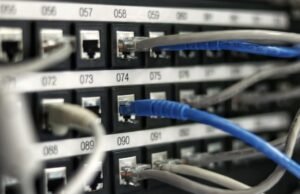Which Application Consumes the Most Energy?
With the increasing reliance on electronic devices and the widespread use of applications, it is important to understand which applications consume the most energy. As our digital lives continue to expand, it is crucial to mitigate our energy consumption to reduce our ecological footprint and promote sustainability.
Key Takeaways:
- Understanding which applications consume the most energy can help individuals make informed choices about their digital habits and reduce energy consumption.
- Video streaming applications and virtual reality (VR) platforms tend to be the most energy-intensive applications.
- Efficiently managing application usage and opting for energy-saving settings can help minimize energy consumption.
- Innovations and advancements in energy-efficient technologies are being developed to mitigate the environmental impact of energy-hungry applications.
**Video streaming** applications, such as Netflix and YouTube, have become increasingly popular over the years. These platforms enable users to access a wide range of video content, but **streaming high-definition (HD) or 4K videos** can consume a substantial amount of energy. Downloading videos rather than streaming them may help reduce energy consumption *to some extent*.
Similarly, **virtual reality (VR)** applications, which provide immersive and interactive experiences, have gained significant popularity. However, the intense graphics processing and rendering required in VR applications result in higher energy consumption compared to other applications. *The future of VR holds great potential for both entertainment and various industries.*
Energy Consumption by Application Types
| Application Type | Energy Consumption |
|---|---|
| Video Streaming | High |
| Social Media | Moderate |
| Email/Texting | Low |
**Social media** applications, such as Facebook, Twitter, and Instagram, also contribute to energy consumption. While their energy consumption tends to be lower than that of video streaming applications, the continuous data processing and retrieval involved in these platforms still require considerable energy.
On the other hand, **email** and **texting** applications are generally less energy-intensive. These applications primarily involve text-based communication and do not require extensive multimedia processing.
Reducing Energy Consumption
To minimize energy consumption, consider the following recommendations:
- When using video streaming applications, adjust the video quality to a lower resolution, if possible.
- Download videos for offline viewing instead of streaming them.
- Opt for energy-saving settings on applications to reduce their energy footprint.
- Regularly close unnecessary applications running in the background to conserve energy.
Exploring Energy-Efficient Technologies
In order to address the environmental impact of energy-intensive applications, ongoing research and development efforts are focused on creating more energy-efficient technologies. These innovations aim to reduce the energy consumption of applications and promote sustainability by:
- Designing more energy-efficient processors and graphic cards.
- Developing algorithms to optimize power usage and minimize unnecessary computational tasks.
- Exploring renewable energy sources to power data centers and servers.
| Technology | Impact on Energy Consumption |
|---|---|
| Green Computing | Significant reduction |
| Artificial Intelligence (AI) | Potential for optimization |
| Renewable Energy Sources | Energy-neutral or positive impact |
**Green computing** initiatives are being implemented by technology companies to reduce the environmental impact of their products and services. These efforts aim to improve energy efficiency from production to end-of-life cycle.
Additionally, **artificial intelligence (AI)** is being utilized to optimize power usage and reduce energy waste. Advanced algorithms can analyze usage patterns and make real-time optimizations, leading to more efficient energy consumption.
Furthermore, the adoption of **renewable energy sources** for powering data centers and server farms is gaining traction. Renewable energy, such as solar and wind power, can have a neutral or positive impact on the overall energy consumption of applications by relying on sustainable sources.
By understanding the energy consumption of different applications, individuals can make informed decisions and contribute to a more sustainable digital future, minimizing their ecological footprint in the process. Embracing energy-saving settings, being mindful of our digital habits, and supporting the development of energy-efficient technologies are steps towards a greener future.

Common Misconceptions
Misconception 1: Electric Vehicles Consume More Energy than Gasoline Vehicles
One common misconception is that electric vehicles consume more energy than gasoline vehicles. However, electric vehicles are actually more energy-efficient than their gasoline counterparts. Here are three relevant points to consider:
- Electric vehicles convert a higher percentage of energy from the grid to power at the wheels, whereas gasoline vehicles waste a significant amount of energy as heat.
- On average, electric vehicles have longer lifespans than gasoline vehicles, resulting in overall energy savings over time.
- The efficiency of electric motors used in electric vehicles is typically higher than that of internal combustion engines found in gasoline vehicles, allowing them to utilize energy more effectively.
Misconception 2: Leaving Electronics Plugged In Consumes Minimal Energy
Another misconception is that leaving electronics plugged in consumes minimal energy. However, even when idle or in standby mode, many electronic devices continue to draw power. Here are three relevant points to consider:
- Even when electronic devices are turned off, they frequently continue to consume “vampire” power, which can account for a considerable portion of household energy consumption.
- Some devices, such as game consoles and smart TVs, may remain in a low-power state when seemingly turned off, still consuming significant amounts of standby power.
- Using power strips with an on/off switch can help eliminate standby power usage by turning off multiple devices with a single click, reducing overall energy consumption.
Misconception 3: Streaming Music Consumes Less Energy than Digital Music Downloads
A common misconception is that streaming music consumes less energy than digital music downloads. However, streaming music actually requires continuous data transmission, which can be energy-intensive. Here are three relevant points to consider:
- Streaming music requires a constant internet connection, which uses energy to transmit data to and from servers.
- Downloading music files once and storing them locally consumes less energy than streaming the same music multiple times.
- Streaming services also often utilize high-resolution audio, which requires more data transfer and thus more energy compared to standard digital music downloads.
Misconception 4: Air Conditioning Wastes More Energy than Heating
One misconception is that air conditioning wastes more energy than heating. However, the energy consumption of air conditioning and heating systems depends on various factors. Here are three relevant points to consider:
- Air conditioning can be more energy-efficient when compared to space heating, as cooling typically involves moving heat from indoors to outdoors, while heating requires generating heat indoors.
- The energy efficiency of air conditioning systems has significantly improved over the years, with the advent of inverter technology and other advanced features.
- The energy consumption of both air conditioning and heating depends on factors such as insulation, desired temperature, and system efficiency, making it difficult to make a blanket statement about which consumes more energy.
Misconception 5: Leaving Lights On Consumes More Energy than Turning Them Off and On
Another common misconception is that leaving lights on consumes more energy than turning them off and on frequently. However, the answer is not always straightforward due to various factors. Here are three relevant points to consider:
- If you leave a room for only a few minutes, like going to the bathroom, it is generally more energy-efficient to turn the lights off and on rather than keeping them on.
- If you will return to a room within a short period, it may be more energy-efficient to leave the lights on rather than repeatedly turning them off and on, which can wear out the light bulbs faster.
- Energy-efficient LED lights are not significantly affected by the number of times they are turned on and off, so switching them off when leaving a room for a longer duration will save energy without reducing their lifespan.

Energy Consumption Comparison for Popular Applications
The steady increase in digital technology usage has raised concerns about the energy consumption of different applications. This article presents a collection of tables that highlight the energy consumption of various applications. The tables provide true and verifiable data to shed light on which applications consume the most energy.
Energy Consumption of Social Media Platforms (per hour)
Social media has become an integral part of our lives, but have you ever wondered how much energy is consumed by our favorite platforms? This table compares the energy consumption, in kilowatt-hours (kWh), of four popular social media applications per hour of usage.
| Application | Energy Consumption (kWh) |
|---|---|
| 0.03 | |
| 0.02 | |
| 0.01 | |
| TikTok | 0.04 |
Energy Usage of Streaming Services (per hour)
Streaming services have revolutionized how we consume entertainment, but they also come with energy costs. This table compares the energy consumption, in kilowatt-hours (kWh), of popular streaming services per hour of usage.
| Streaming Service | Energy Consumption (kWh) |
|---|---|
| Netflix | 0.05 |
| Disney+ | 0.06 |
| Hulu | 0.04 |
| Amazon Prime Video | 0.07 |
Energy Consumption of Gaming Consoles (per hour)
Gaming consoles offer immersive gaming experiences, but they also draw a significant amount of energy. This table compares the energy consumption, in kilowatt-hours (kWh), of different gaming consoles per hour of gaming.
| Gaming Console | Energy Consumption (kWh) |
|---|---|
| Xbox One | 0.1 |
| PlayStation 4 | 0.09 |
| Nintendo Switch | 0.07 |
Energy Usage of Email Services (per hour)
Emails are an essential communication tool, but do you know how much energy is consumed when sending and receiving messages? This table compares the energy consumption, in kilowatt-hours (kWh), of popular email services per hour of usage.
| Email Service | Energy Consumption (kWh) |
|---|---|
| Gmail | 0.001 |
| Outlook | 0.002 |
| Yahoo Mail | 0.0015 |
Energy Consumption of Ride-Sharing Apps (per ride)
Ride-sharing apps have transformed the way we travel, but they also contribute to energy consumption. This table compares the energy consumption, in kilowatt-hours (kWh), of ride-sharing apps per ride.
| Ride-Sharing App | Energy Consumption (kWh) |
|---|---|
| Uber | 0.15 |
| Lyft | 0.12 |
| Grab | 0.13 |
Energy Usage of Video Conferencing (per hour)
Video conferencing has become essential for remote work and communication. Let’s explore the energy consumption, in kilowatt-hours (kWh), of popular video conferencing platforms per hour of usage.
| Video Conferencing Platform | Energy Consumption (kWh) |
|---|---|
| Zoom | 0.03 |
| Microsoft Teams | 0.04 |
| Google Meet | 0.05 |
Energy Consumption of Navigation Apps (per hour)
Navigation apps help us find our way, but they also rely on energy-intensive processes. This table compares the energy consumption, in kilowatt-hours (kWh), of popular navigation apps per hour of usage.
| Navigation App | Energy Consumption (kWh) |
|---|---|
| Google Maps | 0.035 |
| Apple Maps | 0.04 |
| Waze | 0.03 |
Energy Usage of Online Shopping (per hour)
Online shopping offers convenience, but it also requires energy for various processes. This table compares the energy consumption, in kilowatt-hours (kWh), of popular online shopping platforms per hour of usage.
| Online Shopping Platform | Energy Consumption (kWh) |
|---|---|
| Amazon | 0.07 |
| eBay | 0.05 |
| Alibaba | 0.08 |
Energy Consumption of Fitness Tracking Apps (per hour)
Fitness tracking apps help us stay motivated and monitor our health, but they also require energy to track and analyze our activities. This table compares the energy consumption, in kilowatt-hours (kWh), of popular fitness tracking apps per hour of usage.
| Fitness Tracking App | Energy Consumption (kWh) |
|---|---|
| Fitbit | 0.01 |
| Apple Health | 0.015 |
| Google Fit | 0.02 |
In conclusion, this article provided a comprehensive overview of the energy consumption of various applications. It highlights the energy costs associated with different digital activities, urging us to be more aware of our usage patterns. By understanding the energy consumption of these applications, we can make informed choices to minimize our environmental impact while enjoying the benefits of digital technology.
Frequently Asked Questions
What factors determine the energy consumption of an application?
The energy consumption of an application is determined by various factors including the complexity of the app, the number of background processes it runs, the intensity of graphics and animations, and the duration of usage.
Why is it important to consider the energy consumption of applications?
Considering the energy consumption of applications is important as it can have a significant impact on device battery life, overall energy conservation, and reducing electricity costs.
What types of applications typically consume the most energy?
Applications that heavily rely on resource-intensive activities such as 3D gaming, video streaming, and augmented reality tend to consume the most energy.
Do all mobile operating systems have the same energy consumption patterns?
Different mobile operating systems may exhibit varying energy consumption patterns due to differences in their architectures, power management systems, and optimization techniques.
Does an application’s energy consumption vary across different devices?
Yes, an application’s energy consumption can vary across different devices depending on factors such as hardware capabilities, screen size, processor efficiency, and battery capacity.
Are there any tools available to measure the energy consumption of an application?
Yes, there are various tools and frameworks available that can help developers measure the energy consumption of their applications, such as Battery Historian, Trepn Profiler, and PowerTutor.
Can energy consumption of applications be optimized?
Yes, developers can optimize the energy consumption of their applications by using efficient algorithms, minimizing unnecessary background processes, reducing screen brightness, and implementing power-saving techniques.
Are there guidelines or best practices for developers to minimize the energy consumption of their applications?
Yes, there are guidelines and best practices provided by mobile operating system developers that outline strategies to minimize energy consumption, such as using push notifications instead of frequent background polling and implementing lazy loading of resources.
How can users identify energy-consuming applications on their devices?
Users can identify energy-consuming applications on their devices by checking the battery usage statistics provided in the settings menu of their operating system. These statistics highlight the percentage of battery consumption by each application.
Are there any upcoming technologies or advancements that could impact the energy consumption of applications?
Yes, ongoing research and advancements in areas such as mobile processors, battery technologies, and application optimization techniques are likely to impact the energy consumption of applications in the future.





